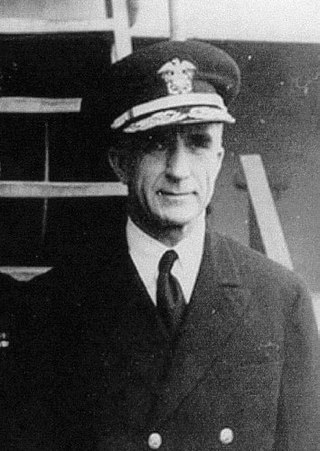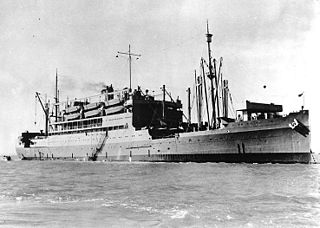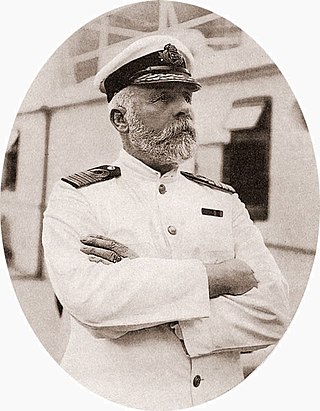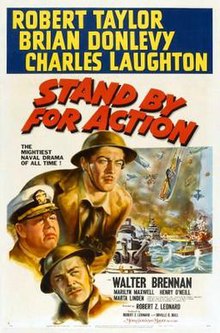
The Battle of Leyte Gulf 23–26 October 1944, was the largest naval battle of World War II and by some criteria the largest naval battle in history, with over 200,000 naval personnel involved.

USS Wasp (CV-7) was a United States Navy aircraft carrier commissioned in 1940 and lost in action in 1942. She was the eighth ship named USS Wasp, and the sole ship of a class built to use up the remaining tonnage allowed to the U.S. for aircraft carriers under the treaties of the time. As a reduced-size version of the Yorktown-class aircraft carrier hull, Wasp was more vulnerable than other United States aircraft carriers available at the opening of hostilities. Wasp was initially employed in the Atlantic campaign, where Axis naval forces were perceived as less capable of inflicting decisive damage. After supporting the occupation of Iceland in 1941, Wasp joined the British Home Fleet in April 1942 and twice ferried British fighter aircraft to Malta.

USS Bonefish (SS-223) was a Gato-class submarine, the first United States Navy ship to be named for the bonefish.

USS Sailfish (SS-192), was a US Sargo-class submarine, originally named Squalus. As Squalus, the submarine sank off the coast of New Hampshire during test dives on 23 May 1939. The sinking drowned 26 crew members, but an ensuing rescue operation, using the McCann Rescue Chamber for the first time, saved the lives of the remaining 33 aboard. Squalus was salvaged in late 1939 and recommissioned as Sailfish in May 1940.

USS Edsall (DD-219), was a Clemson-class destroyer, the first of two United States Navy ships named after Seaman Norman Eckley Edsall (1873–1899). She was sunk by a combined Japanese air and sea attack, approximately 200 miles (320 km) east of Christmas Island on 1 March 1942.

The Battle off Samar was the centermost action of the Battle of Leyte Gulf, one of the largest naval battles in history, which took place in the Philippine Sea off Samar Island, in the Philippines on October 25, 1944. It was the only major action in the larger battle in which the Americans were largely unprepared. After the previous day's fighting, the Imperial Japanese Navy's First Mobile Striking Force, under the command of Takeo Kurita, had suffered significant damage and appeared to be retreating westward. However, by the next morning, the Japanese force had turned around and resumed its advance toward Leyte Gulf. With Admiral William Halsey Jr. lured into taking his powerful Third Fleet north after a decoy fleet and the Seventh Fleet engaged to the south, the recently-landed 130,000 men of the Sixth Army were left vulnerable to Japanese attack on Leyte.

USS Samuel B. Roberts (DE-413) was a John C. Butler-class destroyer escort of the United States Navy which served in World War II, the first of three U.S. Navy ships to bear the name.

The Battle of the North Cape was a Second World War naval battle that occurred on 26 December 1943, as part of the Arctic campaign. The German battleship Scharnhorst, on an operation to attack Arctic convoys of war materiel from the western Allies to the Soviet Union, was brought to battle and sunk by the Royal Navy's battleship HMS Duke of York with cruisers and destroyers, including an onslaught from the destroyer HNoMS Stord of the exiled Royal Norwegian Navy, off the North Cape, Norway.

Rear Admiral Robert Witcher Copeland was a United States Navy officer who served during World War II.

The second USS Paul Jones was a Bainbridge-class destroyer in the United States Navy. She was named for John Paul Jones.

The first USS Fanning (DD-37) was a modified Paulding-class destroyer in the United States Navy during World War I and later in the United States Coast Guard, designated as CG-11. Her namesake was Nathaniel Fanning.

USS O'Bannon (DD/DDE-450), a Fletcher-class destroyer, was the second ship of the United States Navy to be named after Lieutenant Presley O'Bannon (1784–1850), the Marine Corps's "hero of Derna".

Vice Admiral Morton Lyndholm Deyo was an officer in the United States Navy, who was a naval gunfire support task force commander of World War II.

USS Monssen (DD-436), a Gleaves-class destroyer, was the first ship of the United States Navy to be named for Mons Monssen, who was awarded the Medal of Honor for his actions aboard USS Missouri (BB-11) in 1904. Commissioned in 1941, the destroyer saw service during World War II in both Atlantic and Pacific Oceans. Monssen was sunk at the Naval Battle of Guadalcanal on 13 November 1942.

USS McCawley (APA-4) was a McCawley-class attack transport that served with the United States Navy during World War II. Named after Charles G. McCawley, eighth Commandant of the U.S. Marine Corps, she was the lead ship in her class.

Hell Below is a 1933 American MGM pre-Code film set in the Adriatic Sea during World War I about submarine warfare based on Commander Edward Ellsberg's novel Pigboats. The film stars Robert Montgomery, Walter Huston, Robert Young, Madge Evans and Jimmy Durante.

Destroyer is a 1943 American war film directed by William A. Seiter and starring Edward G. Robinson.

United States Navy operations during World War I began on April 6, 1917, after the formal declaration of war on the German Empire. The United States Navy focused on countering enemy U-boats in the Atlantic Ocean and the Mediterranean Sea while convoying men and supplies to France and Italy. Because of United States's late entry into the war, her capital ships never engaged the German fleet and few decisive submarine actions occurred.

"The captain goes down with the ship" is a maritime tradition that a sea captain holds the ultimate responsibility for both the ship and everyone embarked on it, and in an emergency they will devote their time to save those on board or die trying. Although often connected to the sinking of RMS Titanic in 1912 and its captain, Edward Smith, the tradition precedes Titanic by several years. In most instances, captains forgo their own rapid departure of a ship in distress, and concentrate instead on saving other people. It often results in either the death or belated rescue of the captain as the last person on board.

Robert Ward Hayler was a highly decorated officer in the United States Navy with the rank of vice admiral. He was a three time recipient of the Navy Cross, the Navy's second highest military decoration for valor. Two of these awards were received while serving as the commanding officer of the light cruiser USS Honolulu at Guadalcanal and Kula Gulf and the third as a rear admiral and Commander, Cruiser Division Twelve during the Battle of Surigao Strait in October 1944.




















